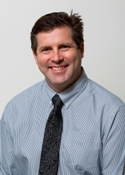Kevan (name changed) participated in one of two participatory focus groups held in Victoria and Vancouver in the spring of 2013 to provide advice on helping create services for men living with HIV who smoke tobacco products. During the focus group he learned that smoking rates among gay men and persons living with HIV (PLWH) are 2 – 4 times higher than the general population. Smoking is a major modifiable determinant of health associated with significant comorbidities (e.g., cardiovascular, neuropsychiatric, pulmonary, renal diseases) and HIV disease progression. Among gay and bisexual men, heavier tobacco use is associated with more severe illness symptoms and higher smoking rates are associated with comorbid illness. Previous smoking reduction and cessation (SRC) interventions used generalized (one-size-fits-all) approaches that have limited success with gay men. Tailoring SRC interventions to the unique needs of gay PLWH may improve the success of SRC with these men. Working with gay men living with HIV who smoke, the BC Lung Association’s QuitNow Program, and researchers from the Schools of Nursing at the University of British Columbia and the University of Ottawa are exploring the use of personas and empathy mapping to develop a tailored SRC web-assisted tobacco intervention (WATI).
Kevan and his peers were invited to become researcher-participants in the development of personas representing the typical gay man living with HIV who smokes. Personas are used in marketing to develop “detailed descriptions of imaginary people constructed out of well-understood, highly specified data about real people.” Personas help people who do not belong to a target market understand the needs of people like Kevan and how their culture influences health promotion and smoking behaviors. During participatory design sessions, Kevan and his peers generated a name and demographic information for their ‘persona’ and ascribed unique thoughts, feelings, and behaviors to each persona. Four personas emerged from the design sessions, Joe Average, Biff Barista, Riley Homo, and Joe Schmo.
Joe Average, for example, is an HIV positive gay man living with his partner in a mid-sized city. He works full time He is a pack-a-day smoker who often smokes with his partner, co-workers, or friends. He is strongly goal oriented and he strives to manage his HIV. He makes sure that he eats right and gets plenty of exercise. Often under deadlines for his job, he finds himself smoking to relieve stress. He smokes as part of his many routines, including taking medications and vitamins, activities of daily living (e.g., showering), socializing with co-workers, smoking marijuana with his partner, and he sometimes smokes cigarettes after getting high on marijuana. Although concerned with his health, he hasn’t been able to quit smoking.
The four personas created by Kevan and his peers were analyzed using ethnographic and thematic analysis techniques to understand the collective needs of HIV positive gay men who smoke and how culture influences their SRC efforts. The first theme that emerged was navigating life and HIV, followed by triple stigma (i.e. gay-related stigma, HIV-related stigma, smoking-related stigma), immunity to public health messages, complexity of managing HIV, complexity of managing identity, benefits of smoking, anxiety about life, and apathy about life. Our goals with Kevan and his peers are to engage with gay men living with HIV who smoke as researcher-participants. This approach affords gay men living with HIV who smoke the opportunity to collaborate with each other, policy makers, researchers, and clinicians in the development of a WATI that includes input and collaboration from all stakeholders.
Authors:
J. Craig Phillips, PhD, LLM, RN, ARNP, PMHCNS-BC, ACRN, Associate Professor, School of Nursing, University of Ottawa
Jack Boomer, MPA, B.Ed., Director, QuitNow, BC Lung Association, Principal, Context Research
Leanne M. Currie, PhD, RN, Associate Professor, School of Nursing, University of British Columbia
**Please note that the material presented here does not necessarily imply endorsement or agreement by individuals at the Centre for Addictions Research of BC



